Post Airfield
1923 - 1945
______________________________
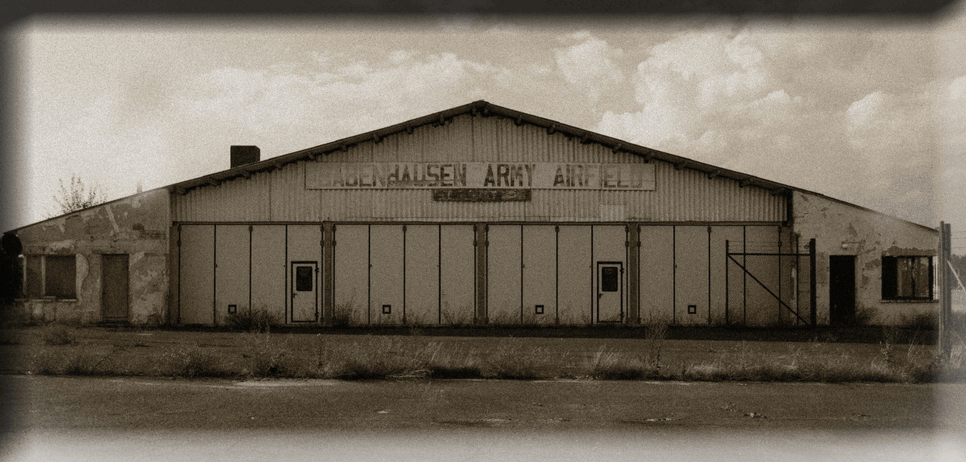
____________________________________
All Pictures © Bildarchiv HGV Babenhausen
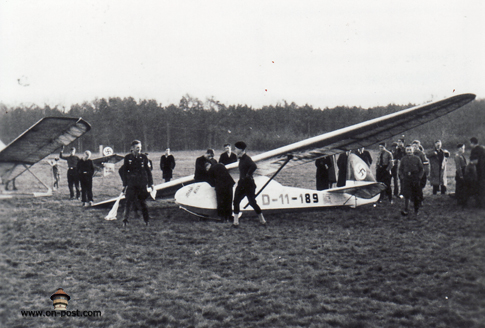
A German "Grunau Baby" glider at the Babenhausen Airfield.
The glider on the left may be a SG 38
sometime between 1935-39
The glider on the left may be a SG 38
sometime between 1935-39
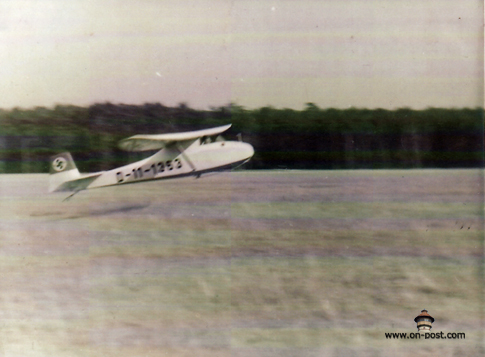
A German "Grunau Baby" glider lands at the Babenhausen Airfield
sometime between 1935-39
sometime between 1935-39

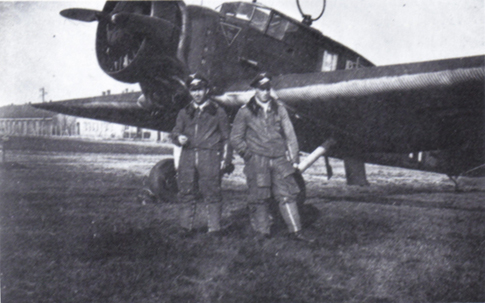
This Aircraft was used to train FLAK gun crews
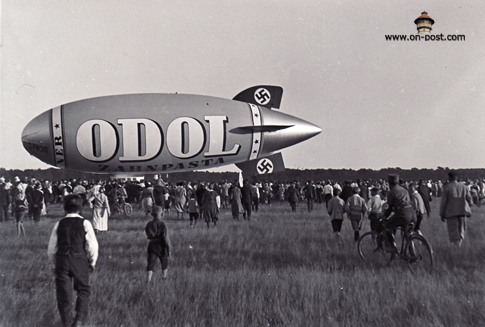
sometime between 1935-39
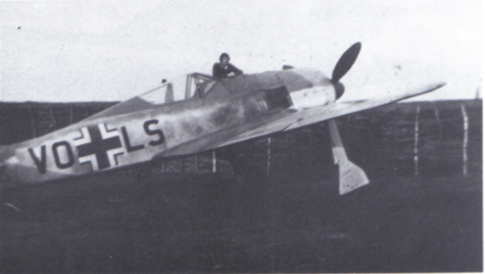
A Fw 190 with pilot NCO Hans Stoeckmann on the camouflaged airstrip at Babenhausen
1944-45
1944-45
__________________________________
The History
of the
Babenhausen Airfield
of the
Babenhausen Airfield
- 1923, Darmstadt’s Academic Flying group trained at the local parade ground in Babenhausen.
- 1939,The parade ground was officially converted to an Airfield, the runway was grass.
- 1940,The German Luftwaffe assigns Babenhausen to "einsatzhafen II"
- 1942, The German Luftwaffe stationed two Junkers W33 "Flak trainers" in Babenhausen.
- 1943, the Kaserne was home to a development detachment of the German air force (Luftwaffe)
- 1944, the Luftwaffe stationed several units at the Babenhausen airfield.
| Luftwaffe Units & Aircraft stationed in Babenhausen 1944- 1945 ___________________________________ August 28 - September 5 1944 II KG 53 "Legion Condor" 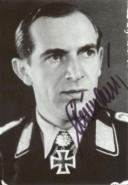 Major Wittmann 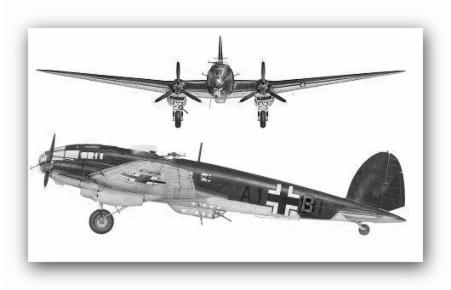 __________________________ September 10 - October 21 1944  JG 77
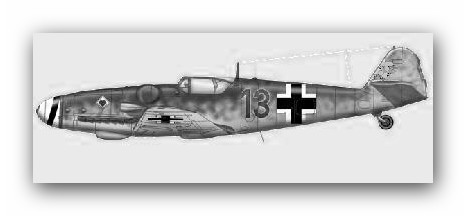 ______________________________________________ November 11 - December 3 1944  I JG 11 Group Commander: Lieutenant Guder 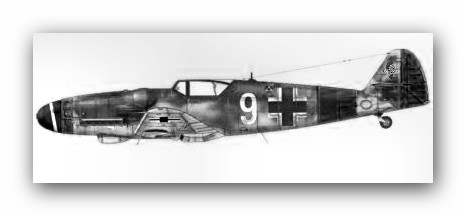 a JG 11, Messerschmitt BF 109G14 ___________________________ December 3 - January 25 1945  II JG 4 Group Commander: Major Schroeder 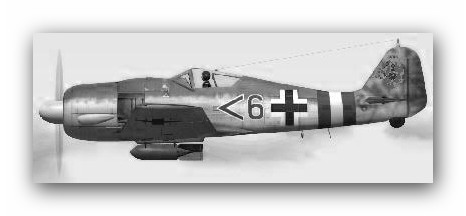 ________________________________ February 6 - February 18 1945
I JG2 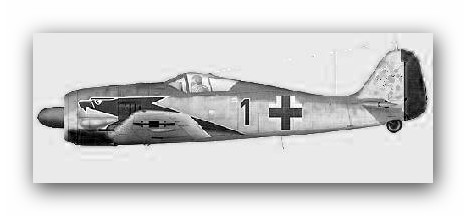 a JG 2, Focke-Wulf FW 190A-4 I JG 26 Group Commander Captain Hensike 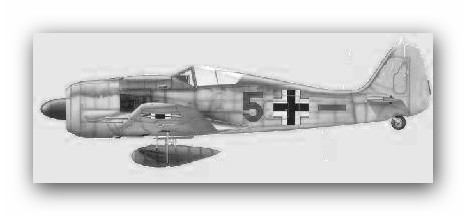 a JG 26, Focke-Wulf FW 190A-8 February 19 - March 25 1945 I JG 2 Group Commander "Oberleutnant" Lemke  a JG 2, Focke-Wulf FW 190A-4  Group Commander "Oberleutnant" Lemke 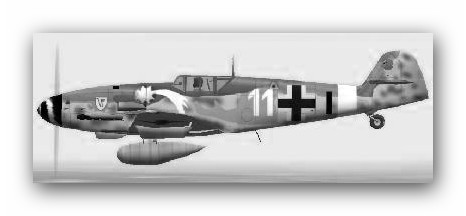 a JG 3, Messerschmitt Bf 109G-6/R-6 II
JG 54 Group Commander "Oberleutnant" Lemke 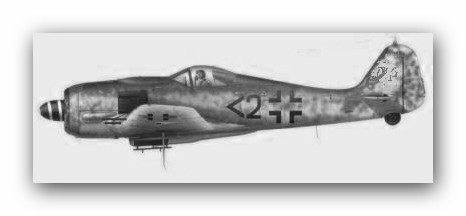 a JG 54, Focke-Wulf FW 190 D-8 |
_____________________________
U.S Army Airfield
(EDEF)
1951-2007
| The United States Army Airfield History __________________ 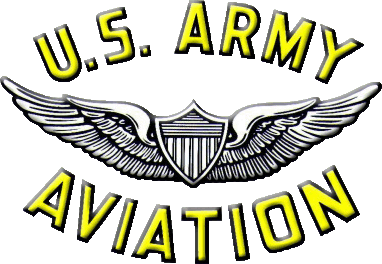 Babenhausen
AAF has been the subject of various commands. Beginning with the
invasion of Normandy, the planning was under way to make German
airfields a part of a larger plan. There were tactical, resupply and
evacuation missions to be flown in close support after the beach head
was established. The Babenhausen Luftwaffe airfield runway orientation was 027/217 degrees, NNE/SSW. The runway was a sod covered 3600 feet long by 120’ wide expanse. At the time, there was not a dependent housing area. The runway ran from B26, Babenhausen/Aschaffenburg highway, southwest towards the old Rod & Gun Club, across what was later known as the “Pool Table” and the location of the “Hawk” Battery. The study by the Americans, in 1945, had the same sod runway with the orientation of 027/217 degrees, or the same as the Luftwaffe airfield. This was proposed as a Supply and Evacuation Air Landing Ground, (ALG). The length was 120 feet wide and 5000 long. One of these plans was the study which pertained to the German Airfields. It was a conducted by the 9th US Army Air Corps. This study was to create usable airfields to supplement the advance of Allied ground forces. Babenhausen was to be used, and was listed as Y-77, in the after mentioned studies. The alphabetical designation for the airfield was EDEF. The Americans used the airfield on their arrival in 1951. The runway and the ramp were paved in 1960. The orientation for the paved runway was 070/250 degree, (ENE/WSW). The length was 2200 feet by 100 feet wide. The 36th Arty Group Operations wooden building and the hanger were built in 1951. The larger concrete hanger for the 2nd Bn, 5th Arty was built in 1952. |
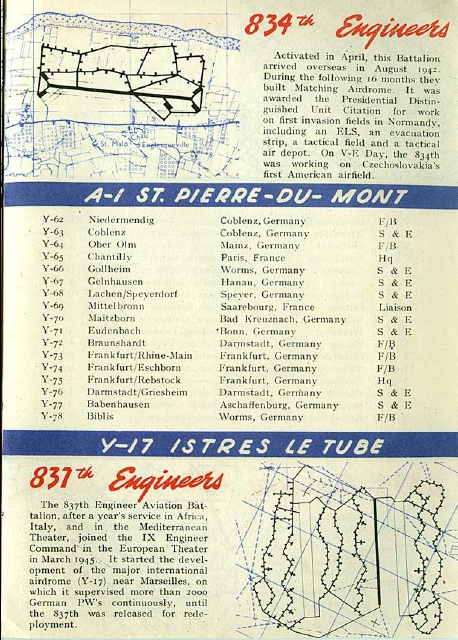
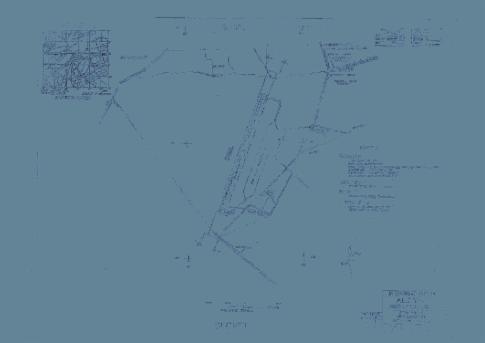
The Blueprint of the Babenhausen Airfield Y77
-1951-
____________________________
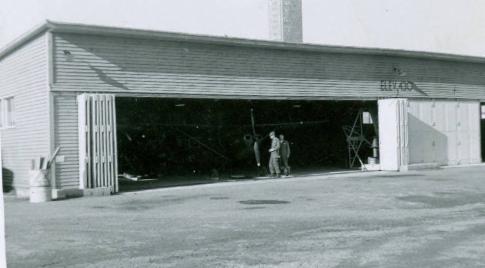
©Wayne
Dixon
36th FA Group hanger1952
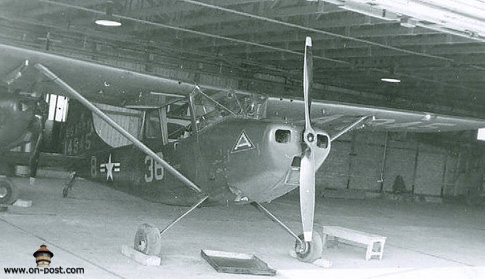 ©Wayne
Dixon
©Wayne
DixonA 519th FA Bn O-1A
at the 36th FA GP Hanger
-1952-
at the 36th FA GP Hanger
-1952-
____________________________
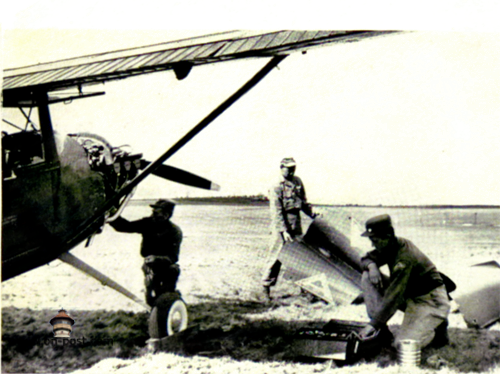
L-19 gets a pre flight check by Air section chief T/SGT Martin Morris, PFC Edmund Beyer and Ermound Andrews, Air section Mechanics
(18th FA)
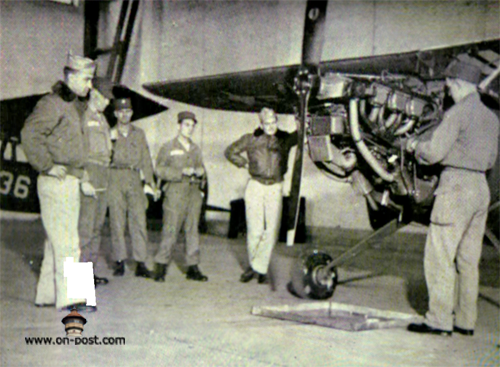
A scheduled maintenance on the L-19, by the Battalion Air Section.
(519th FA)
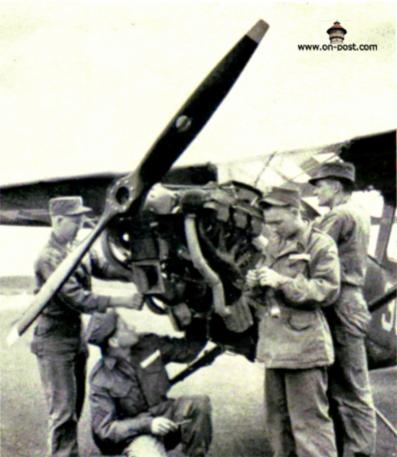
The Aviation section, working the "bugs" out of the L-19
(519FA)

The Aviation section looks over a new L-19 engine
(593rd FA)
___________________________________
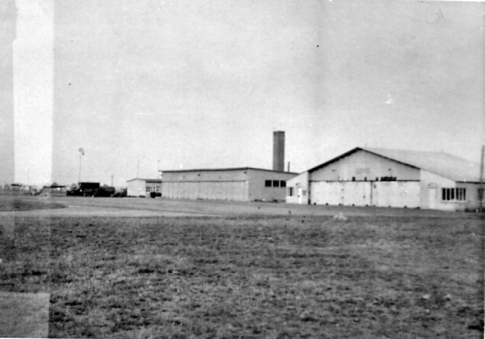
©Walter Duke
36th /FA Group Operations, (the small building on the left).
36th FA Group hanger
(middle hanger)
-2nd Bn, 5th Arty hanger
(large hanger on the right)
– 1964 -
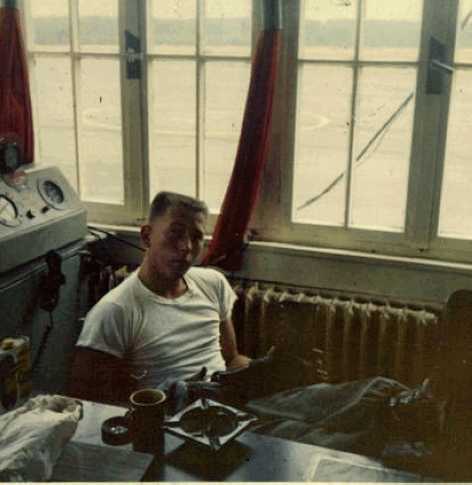
©Edward Kexel
SP4 Bruce Trexler
Crew Chief 2nd 5th FA
Babenhausen
- 1964 -
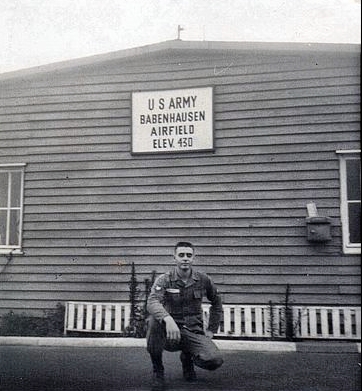
©Edward Kexel
Larry ColemanCrew chief
36 FA Group
- 1964 -
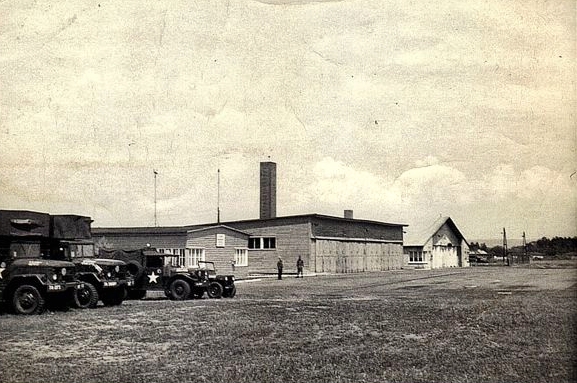
©Ed Kexel
From L-R:
36th FA Group Vehicles
FA Group Operations,
36th FA Group hanger
2nd Bn, 5th Arty hanger
– 1964 -
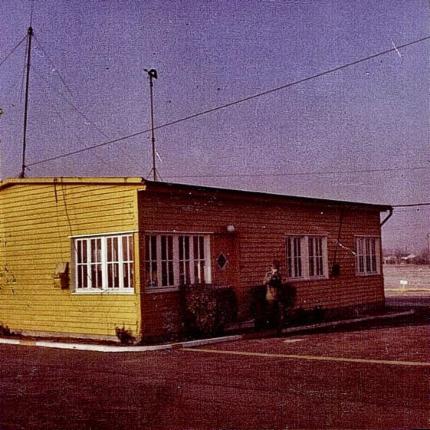
Airfield Operations
-1964-
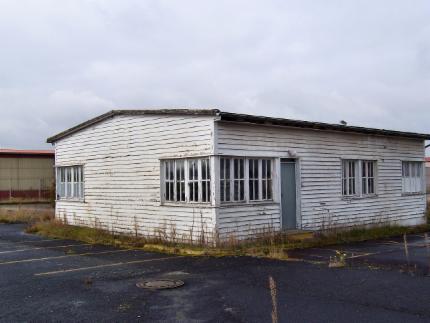
©Walter Duke
Airfield Operations
-2010-
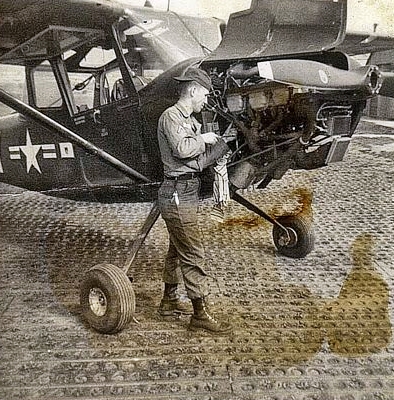
©Ed Kexel
- O1-A-
Preventive Maintenance Time
Ed Kexel
- 1964 -
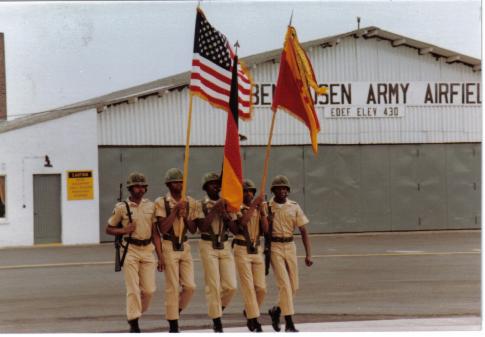
©Clint Walker
41st FA Brigade Color guard at a change of command ceremony on ramp at the airfield with the 2nd Bn 5th Arty hanger in background- 1982-
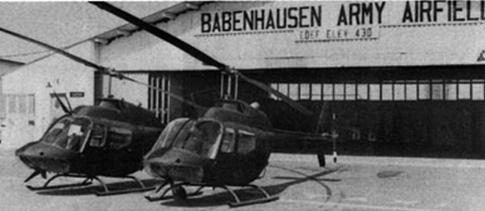
Source- Internet
62nd Aviation Company
1982
1982
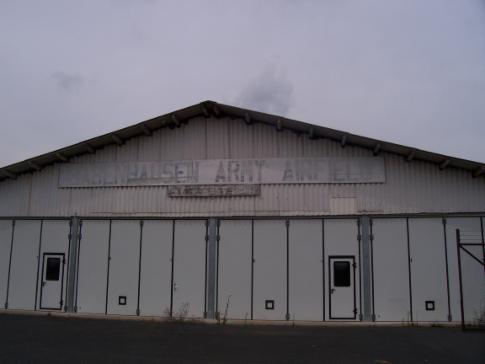
©on-post.com
Closed 2nd Bn, 5th Arty hanger in 2007 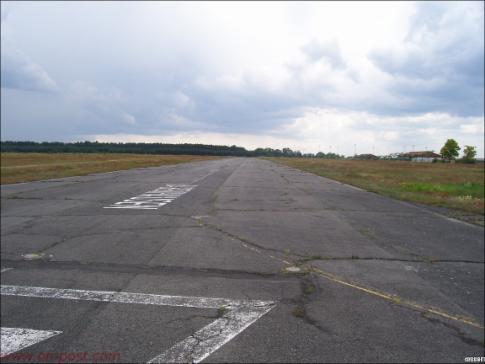
©on-post.com
Runway 25 (looking SW) from Takeoff position
- 2007 –
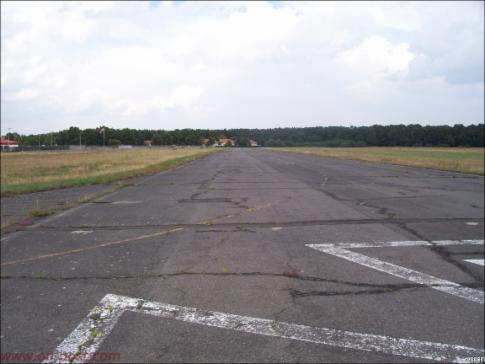
©on-post.com
Runway 07 (looking NE) from Takeoff position
– 2007 –
_______________________________________________
U.S. Army Aircraft
in Babenhausen
1951-2007
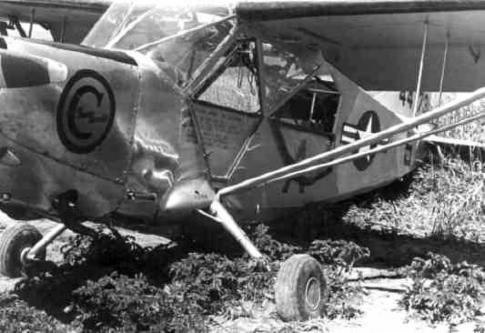
U.S.Constabulary - L-4
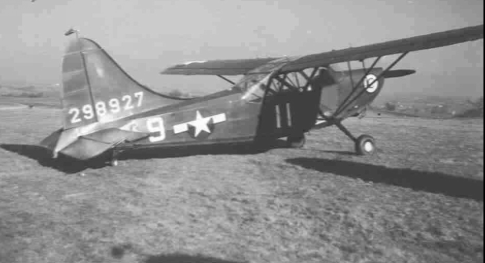
36th FA Group - 01-A - #528927
with the U.S Constabulary insignia on nose cowling
-1952-
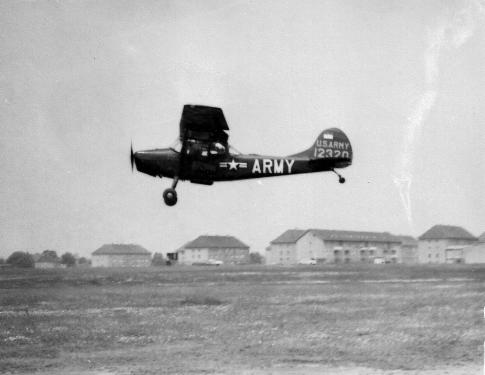
©Walter Duke
2nd Bn, 5th Arty, O-1A - #5112320 with V Corps logo on Vertical Fin, landing SW.
The Babenhausen housing area in background.
– 1964-
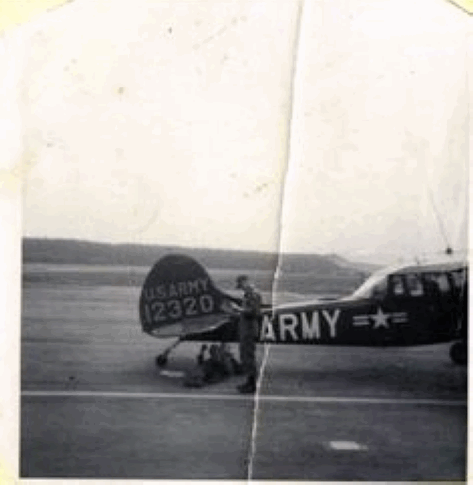
©Walter Duke
2nd Bn, 5th Arty – 0-1A – in post flight inspection.
Ed Kexel on the right.
–1964-
Ed Kexel on the right.
–1964-
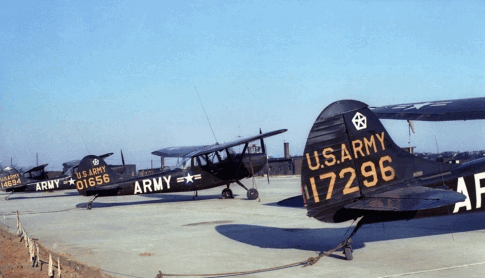
©Robert Scheidt
V Corps ramp at Bonames AAF at Frankfurt.
O-1A, Bird Dogs. V Corps logo on vertical fin.
O-1A, Bird Dogs. V Corps logo on vertical fin.
-1964-
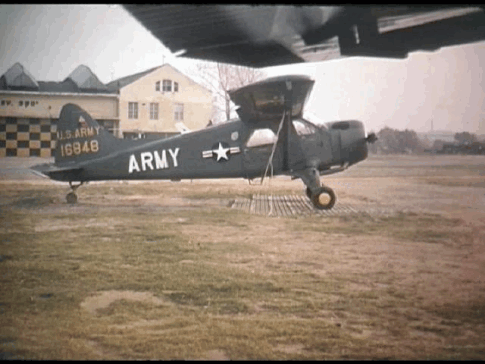
©Robert Scheidt
U.S. Army U6-A, Beaver # 516848 (Armored Division unit with yellow hubcaps).
–1964-
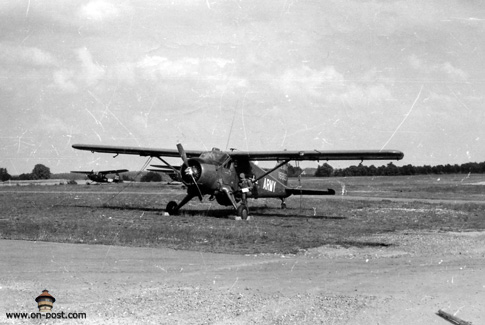
©Walt Leon
An L-20 Beaver parked at the airfield at Babenhausen.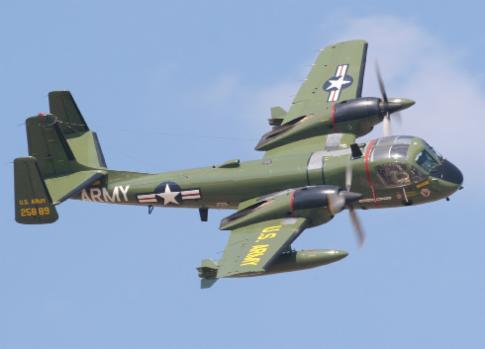 ©Grumann Aircraft
©Grumann Aircraft –1962-
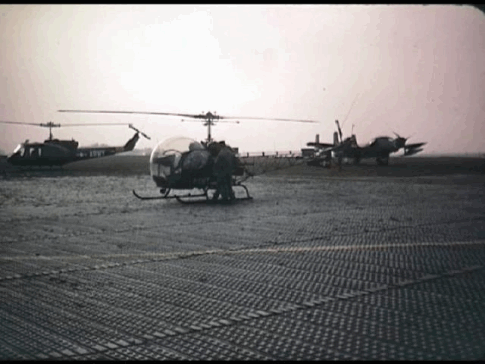
©Robert Scheidt
A U.S. Army UH1-D Huey, OH-13, Sioux and a OV-1C Mohawk at the Grafenwhor AAF PSP Ramp
–1964-
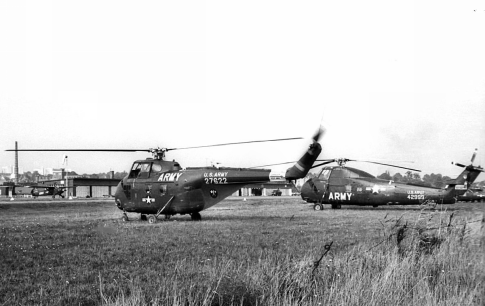
©Robert Scheidt
–1964-
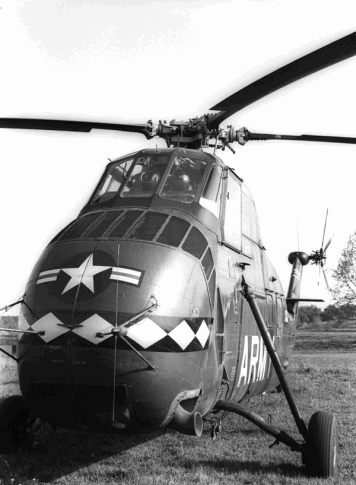
U.S. Army, CH-34.
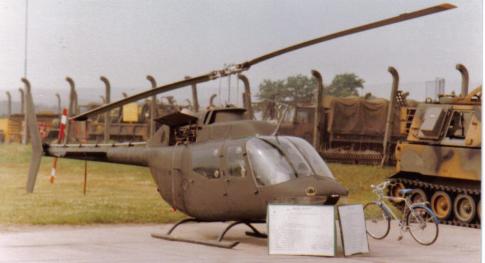
©Clint Walker
Babenhausen AAF
–1982-
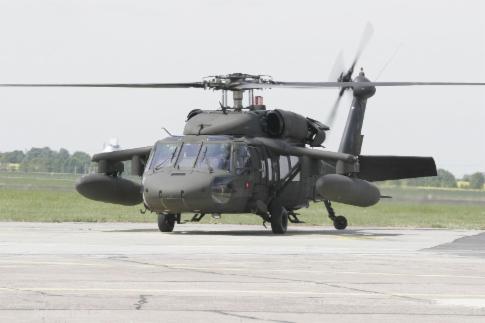
U. S Army UH 60 E Blackhawk
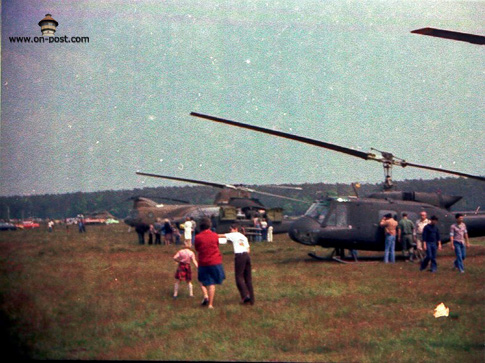
Source - Internet
_____________________Babenhausen Airshow
-1977-
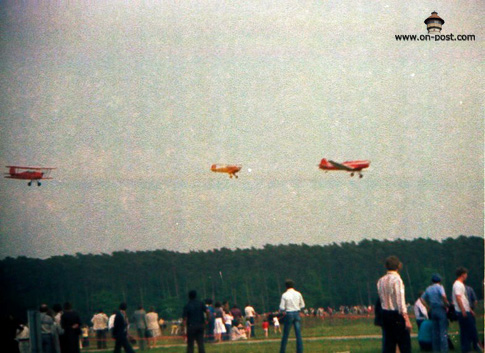
-1977-

Source - Internet
Babenhausen Airshow
-1977-
-1977-
U.S. Army Airfield Personal
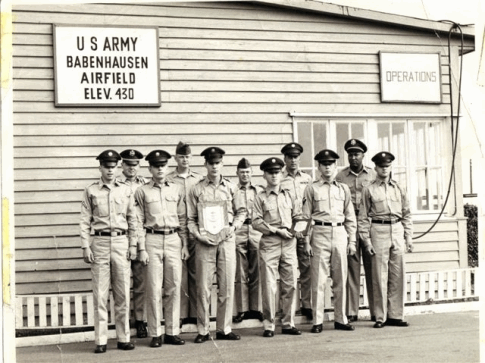
©Edward Kexel
U. S. Seventh Army Safety Award
Aviation Sections, 36th FA Gp, and 2nd Bn, 5th FA.
L-R. unknown, Walter Duke, Larry Coleman, Bob Smith, Andy Stump (holding Award Plaque), Francis T. O’Byrne, Ed Kexel, Long, Bruce Trexler, Eddie D. Monroe, John XXX.
-1965-
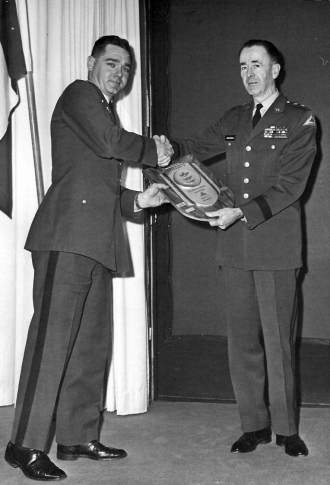
7th Army Photo
1LT Walter Duke receiving Seventh Army Aviation Safety Awardfrom BG H. Twitchell at Stuttgart.
-1965-
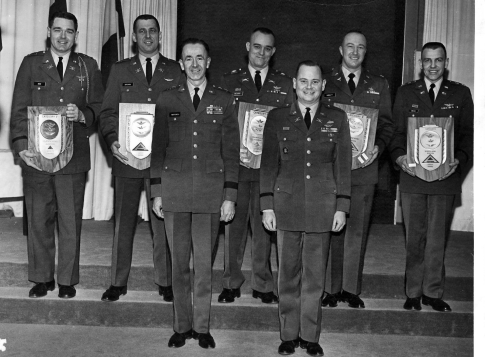
7th Army Photo
Seventh Army Safety AwardsStuttgart
-1965-
_____________________________________________________________________________________________________________________
Graphics, Articles and photos on this web site are posted by permission of their owners and are for viewing only. They are not for general distribution, nor for use on other websites, unless permitted by the web master or the original owner. If you find any files on this site that you believe are unauthorized, please contact the web master immediately so that the issue can be resolved.
___________________________________________________